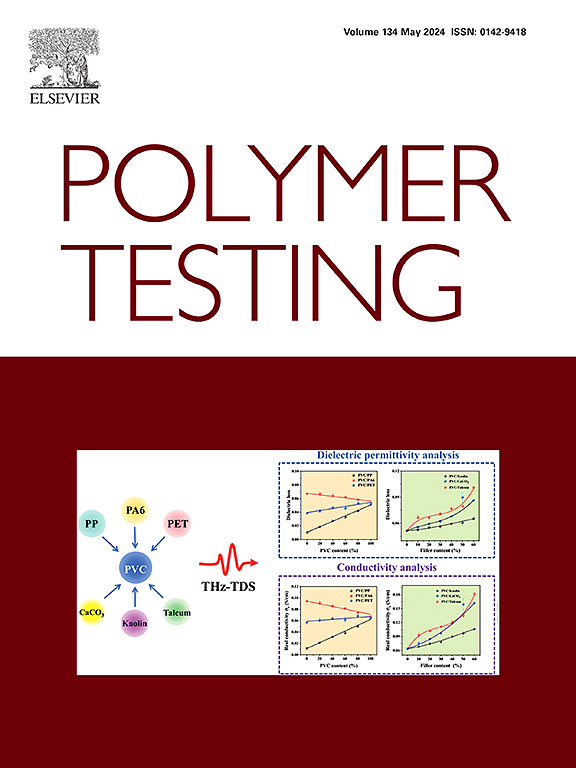Fracture behavior of a thermoplastic polyolefin (TPO) under airbag deployment conditions evaluated through Reversed Charpy tests
IF 5
2区 材料科学
Q1 MATERIALS SCIENCE, CHARACTERIZATION & TESTING
引用次数: 0
Abstract
For the past decades, polymers such as polypropylene (PP) and polyvinyl chloride have replaced metals as the main material for automotive instrument panel construction. However, their high sensitivity to temperature and strain rate can result in malfunctioning of airbag systems, so thermoplastic polyolefins (TPOs) have gained popularity for instrument panels as they are less sensitive to temperature. Nonetheless, the relationship between the fracture behavior of TPOs and the typical airbag deployment conditions have not been thoroughly discussed yet. Therefore, this study will investigate the fracture behavior of an automotive TPO material under plane stress conditions via Reversed Charpy tests, emulating the fracture process of the instrument panel tear line at different temperatures and strain rates. Experimental results showed that the yield stress and plastic work dissipation, , are higher at low temperatures, with a distinguishable transition (drop) around the glass transition temperature of the PP matrix. Additionally, wp increased at low temperatures when increasing the impact speed suggesting that the deformation process changes from isothermal to adiabatic, increasing the temperature at the crack tip. This was supported with the fracture surface analysis, in which a relaxation zone near the crack tip caused by a temperature increase was observed. Additionally, quasi-static tensile, tear and single-edge notch bending (SENB) tests were performed. Yield stresses obtained with Reversed Charpy were lower than those obtained with tensile tests, due to the higher shear stresses and plastic deformation promoted by plane stress conditions during Reversed Charpy tests, highlighting the importance not only of temperature and strain rate, but also of the geometry of the specimen, when characterizing materials for instrument panel construction. This works shows how the Reversed Charpy test can characterize the fracture of instrument panel materials, leading to cheaper evaluation of new materials and safer airbag deployment in an accident.
求助全文
约1分钟内获得全文
求助全文
来源期刊

Polymer Testing
工程技术-材料科学:表征与测试
CiteScore
10.70
自引率
5.90%
发文量
328
审稿时长
44 days
期刊介绍:
Polymer Testing focuses on the testing, analysis and characterization of polymer materials, including both synthetic and natural or biobased polymers. Novel testing methods and the testing of novel polymeric materials in bulk, solution and dispersion is covered. In addition, we welcome the submission of the testing of polymeric materials for a wide range of applications and industrial products as well as nanoscale characterization.
The scope includes but is not limited to the following main topics:
Novel testing methods and Chemical analysis
• mechanical, thermal, electrical, chemical, imaging, spectroscopy, scattering and rheology
Physical properties and behaviour of novel polymer systems
• nanoscale properties, morphology, transport properties
Degradation and recycling of polymeric materials when combined with novel testing or characterization methods
• degradation, biodegradation, ageing and fire retardancy
Modelling and Simulation work will be only considered when it is linked to new or previously published experimental results.
 求助内容:
求助内容: 应助结果提醒方式:
应助结果提醒方式:


